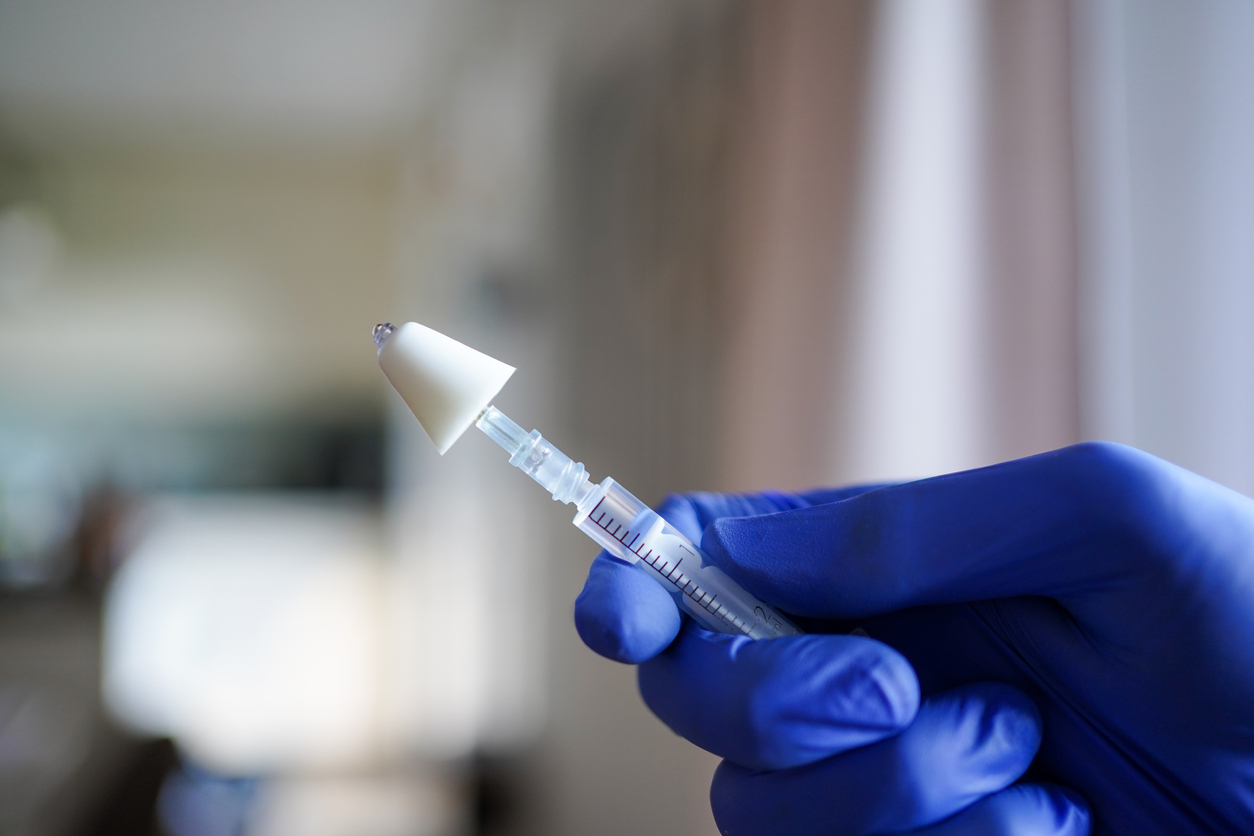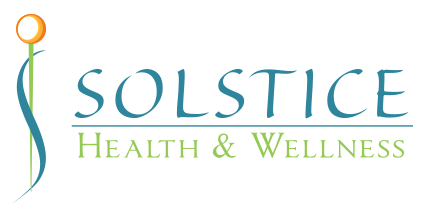Naloxone
What is Naloxone?
Naloxone is a medicine that rapidly reverses an opioid overdose. It is an opioid antagonist. This means that it attaches to opioid receptors and reverses and blocks the effects of other opioids. Naloxone can quickly restore normal breathing to a person if their breathing has slowed or stopped because of an opioid overdose. It has no effect on someone who does not have opioids in their system, and it is not a treatment for opioid use disorder. Examples of opioids include heroin, fentanyl, oxycodone (OxyContin®), hydrocodone (Vicodin®), codeine, and morphine.
What Are Some Signs of An Opioid Overdose?
- unconsciousness
- very small pupils
- slow or shallow breathing
- vomiting
- an inability to speak
- faint heartbeat
- limp arms and legs
- pale skin
- purple lips and fingernails
How is Naloxone Given?
Naloxone should be given to any person who shows signs of an opioid overdose or when an overdose is suspected. It can be given as a nasal spray or it can be injected into the muscle, under the skin, or into the veins. Steps for responding to an opioid overdose can be found in the Substance Abuse and Mental Health Administration’s (SAMHSA) Opioid Overdose Prevention Toolkit.
What Are the Different Naloxone Delivery Systems?
Naloxone comes in two FDA-approved forms: injectable and prepackaged nasal spray. No matter what dosage form you use, it’s important to receive training on how and when to use naloxone. You should also read the product instructions and check the expiration date.
- Injectable brands are offered by different companies listed in the FDA Orange Book under “naloxone”(look for “injectable”). Typically, the proper dose must be drawn up from a vial. Usually, it is injected with a needle into muscle, although it also may be administered into a vein or under the skin. The FDA recently approved ZimhiTM, a single-dose, prefilled syringe that can be injected into the muscle or under the skin.
- Note: Some people use an improvised nasal spray emergency kit not approved by the FDA that combines injectable naloxone with an attachment designed to deliver naloxone through the nose. However, this improvised intranasal device is not easy to assemble, especially when under pressure in an emergency, and requires training beforehand. Additionally, the FDA-approved devices have been shown to produce substantially higher blood levels of naloxone than the improvised nasal spray. These outcomes suggest that the approved prepackaged nasal spray technology is preferable over non-FDA-approved forms.
- Prepackaged Nasal Spray (generic naloxone, Narcan®, Kloxxado®), developed as a result of NIDA-funded research, is an FDA-approved prefilled, needle-free device that requires no assembly and is sprayed into one nostril while the person lays on their back. This device can also be easier for loved ones and bystanders without formal training to use.
Is Narcan® the Same as Naloxone?
When naloxone was first approved to reverse opioid overdoses, its brand name was “Narcan.” There are now other formulations and brand names, but many people continue to call all of these products “Narcan.” However, the proper generic name is “naloxone.”
Is There a Preferable Delivery System?
All systems used by first responders deliver the stated dose of naloxone and can be highly effective in reversing an opioid overdose. Study findings released in March 2019 suggests that the FDA-approved naloxone devices deliver higher blood levels of naloxone than the improvised nasal devices.
Can I Give Naloxone to Someone Who Has Overdosed?
Yes. Families with loved ones who struggle with opioid addiction should have naloxone nearby; ask their family member to carry it; and let friends know where it is. People should still call 911 immediately in the event of an overdose.
Naloxone is being used more by police officers, emergency medical technicians, and non-emergency first responders than before. In most states, people who are at risk or who know someone at risk for an opioid overdose can be trained on how to give it. Families can ask their pharmacists or health care provider how to use the devices.
What Precautions Are Needed When Giving Naloxone?
Naloxone works to reverse opioid overdose in the body for only 30 to 90 minutes. But many opioids remain in the body longer than that. Because of this, it is possible for a person to still experience the effects of an overdose after a dose of naloxone wears off. Also, some opioids are stronger and might require multiple doses of naloxone. Therefore, one of the most important steps to take is to call 911 so the individual can receive immediate medical attention. NIDA is supporting research for stronger formulations for use with potent opioids like fentanyl.
People who are given naloxone should be observed constantly until emergency care arrives. They should be monitored for another 2 hours after the last dose is given to make sure breathing does not slow or stop.
People with physical dependence on opioids may have withdrawal symptoms within minutes after they are given naloxone. Withdrawal symptoms might include headaches, changes in blood pressure, rapid heart rate, sweating, nausea, vomiting, and tremors. While this is uncomfortable, it is usually not life threatening. The risk of death for someone overdosing on opioids is worse than the risk of having a bad reaction to naloxone. Clinicians in emergency room settings are being trained to offer patients immediate relief and referral to treatment for opioid use disorder with effective medications after an opioid overdose is reversed. NIDA offers tools for emergency clinicians here.
Side effects are rare, but people might have allergic reactions to the medicine. Overall, naloxone is a safe medicine. But it only reverses an overdose in people with opioids in their systems and will not reverse overdoses from other drugs like cocaine or methamphetamine.
How Much Does Naloxone Cost?
The cost varies depending on where you get the naloxone, how you get it, and what type you get. Patients with insurance should check with their insurance company to see if this medicine is covered. Patients without insurance can check the retail costs at their local pharmacies. Some drug companies have cost assistance programs for patients unable to pay for it.
Where Can I Get Naloxone?
Many pharmacies carry naloxone. In some states, you can get it from a pharmacist even if your doctor did not write you a prescription for it. It is also possible to get naloxone from community-based distribution programs, local public health groups, or local health departments, free of charge.
Points to Remember
- Naloxone is a medicine that rapidly reverses an opioid overdose. It attaches to opioid receptors and reverses and blocks the effects of other opioids.
- Naloxone is a safe medicine. It only reverses overdoses in people with opioids in their systems.
- There are two FDA-approved formulations: injectable and prepackaged nasal spray.
- Police officers, emergency medical technicians, and first responders are trained on how to give naloxone.
- In some states, friends and family members can be trained on how to give naloxone.
- Naloxone only works in the body for 30 to 90 minutes. It is possible for a person to still experience the effects of an overdose after naloxone wears off or need multiple doses if a potent opioid is in a person’s system.
- In some areas, you can get naloxone from pharmacies with or without a personal prescription from community-based distribution programs, or local health departments. The cost varies depending on where and how you get it as well as what type you get.
Source: National Institute on Drug Abuse; National Institutes of Health; U.S. Department of Health and Human Services.
NIDA. 2022, January 11. Naloxone DrugFacts. Retrieved from https://nida.nih.gov/publications/drugfacts/naloxone on 2022, November 27

Co-Prescribing Naloxone with Prescription Opioids
Some research suggests that when clinicians prescribe naloxone along with prescription opioids including suboxone, the risk of opioid overdose decreases even if the naloxone prescription does not get filled. The naloxone prescription appears to serve as an important educational strategy. As a result, the CDC began recommending co-prescriptions in some cases, outlined in the CDC’s 2016 Guidelines and detailed by guidance issued by HHS in 2018. In August 2019, a study showed that overall national rates for naloxone co-prescription along with any opioid increased among Medicare Part D patients.
Struggling with an Opioid Addiction?
If you or a loved one is struggling with an Opioid Addiction, call Solstice Health & Wellness to schedule an appointment, or to learn more about addiction recovery services, contact us.
*Please do not submit any Protected Health Information (PHI).

